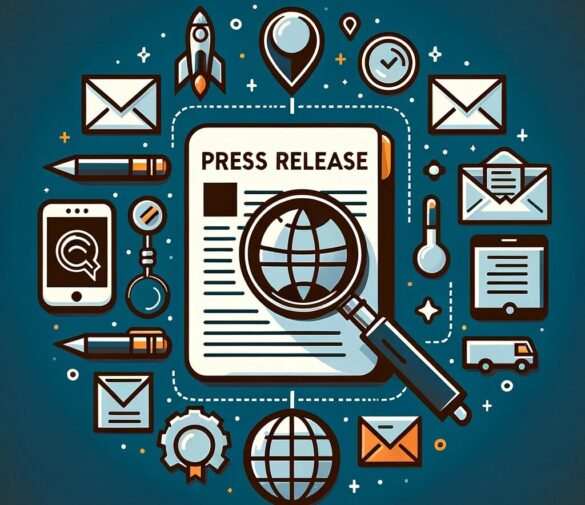Understanding Press Releases
A press release is a fundamental tool in the world of public relations, designed to capture the attention of the media and generate coverage for an event, product launch, or other newsworthy announcements. This section dives into the definition, purpose, and various types of press releases, providing a foundational understanding for crafting effective communications that resonate with both media outlets and the public.
Definition and Purpose
A press release, also known as a news release, is a written communication aimed at members of the news media for the purpose of announcing something ostensibly newsworthy. Typically, it follows a standardized format that includes a headline, dateline, body text, and sometimes a boilerplate text that provides background information about the company or organization issuing the release.
The primary purpose of a press release is to promote something significant and specific, and to do so clearly and succinctly. It serves as a direct channel between a company or organization and the media, with the goal of stimulating interest and encouraging journalists to develop articles, news stories, or interviews based on the content of the release. Effectively, it is a tool for garnering publicity and enhancing the public’s awareness about new developments, achievements, or milestones related to the issuer.
Types of Press Releases
There are several types of press releases, each tailored to convey specific kinds of information. Understanding the differences can help in selecting the most appropriate format for your message. Common types include:
- Product Launches: Announces the introduction of a new product or service to the market, highlighting its features, benefits, and availability.
- Events: Promotes upcoming events, providing details such as the date, location, purpose, and who should consider attending.
- New Appointments: Communicates changes in company leadership or significant new hires, often with background information on the individual(s) and their anticipated impact on the company.
- Awards and Achievements: Showcases recognitions, awards, or other achievements earned by the company or its employees, emphasizing the significance of these accomplishments.
- Partnerships and Collaborations: Announces new partnerships or collaborations between companies, detailing the nature of the alliance and the expected benefits for all parties involved.
- Financial Announcements: Used by publicly traded companies to announce earnings, dividends, or other financial news to shareholders and the financial community.
- Crisis Management: Issued to manage public perception during a crisis or to address potentially damaging news, aiming to present the company’s stance or response to the situation.
Each type of press release has its specific context and objectives, but all share the common goal of communicating important information in a manner that is accessible and engaging for the media and the public alike. By selecting the appropriate type and tailoring the content to suit the intended audience, organizations can effectively use press releases to influence public perception and media coverage.
Key Components of a Press Release
A well-crafted press release contains several key components that work together to convey your message clearly and effectively to the media and the public. Understanding the purpose and best practices for each section can significantly enhance the impact of your press release. Here’s a breakdown of these essential elements:
Headline
The headline is arguably the most critical part of your press release. It needs to be compelling, clear, and concise, capturing the essence of your announcement in a way that grabs attention immediately. A well-written headline should make the reader want to learn more, acting as a hook that draws them into the body of the press release. Think of the headline as your first and best chance to make an impression, so it’s worth spending time to get it right.
Dateline
The dateline precedes the body of the press release and includes the release date and location. This component is crucial for providing context, as it informs readers about the timeliness and relevance of the information being presented. The dateline helps ensure that your news is seen as current and gives journalists key details for reporting.
Introduction
The introduction, or the first paragraph of the press release, should answer the who, what, when, where, and why (the 5Ws) of your announcement. This section is where you provide the most critical details of your news, laying the foundation for the rest of the release. The introduction must be clear, informative, and engaging, setting the stage for the deeper dive that follows in the body.
Body
The body of the press release elaborates on the information introduced at the beginning. Here, you can include additional details, quotes from key stakeholders or experts, and any other relevant information that supports your announcement. The body should be structured logically, with each paragraph building on the information provided previously. Use clear, straightforward language and avoid jargon to ensure your message is accessible to a broad audience.
Boilerplate
The boilerplate is a standard paragraph that provides background information about your company or organization. Positioned at the end of the press release, it should offer a brief overview of what your company does, its mission, and any notable achievements or milestones. The boilerplate remains consistent across all press releases from your organization, providing a familiar anchor of information for journalists and readers alike.
Contact Information
Finally, your press release should include detailed contact information, making it easy for journalists and interested parties to reach out for further information. This section should include the name, phone number, email address, and, if applicable, the social media handles of the person or team responsible for media inquiries. Ensuring your contact information is accurate and readily available is essential for facilitating follow-up and potential coverage.
By carefully crafting each of these key components, your press release stands a much better chance of catching the eye of journalists, achieving media coverage, and reaching your target audience effectively.









